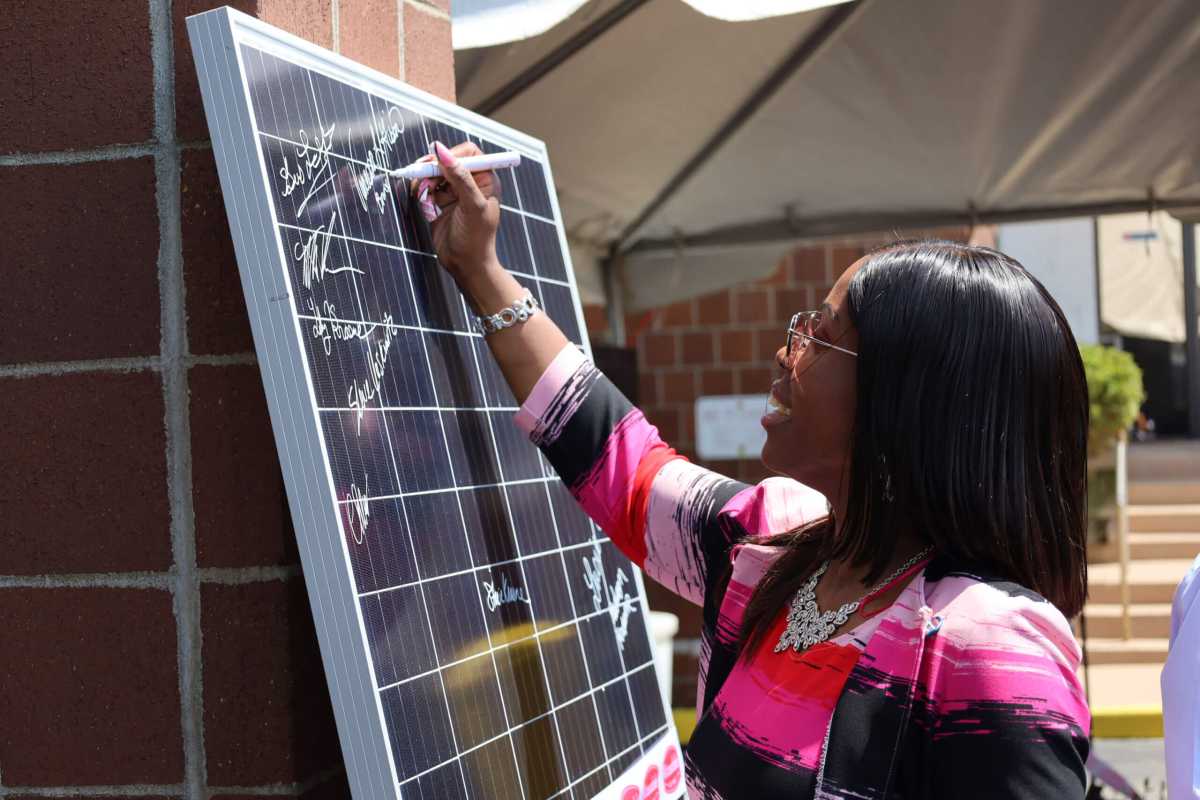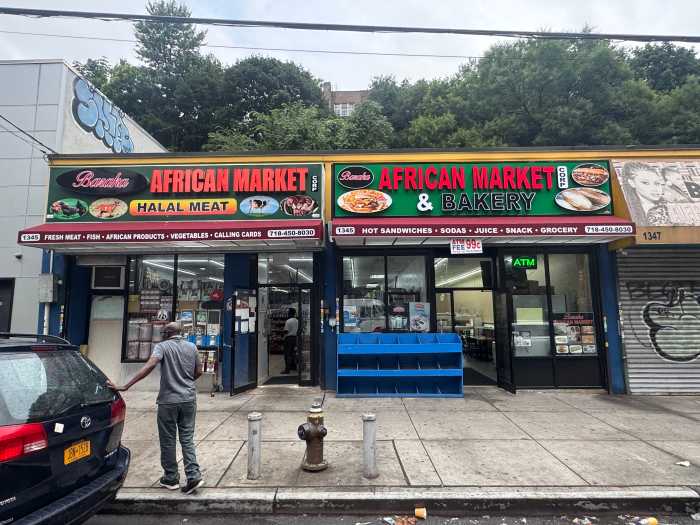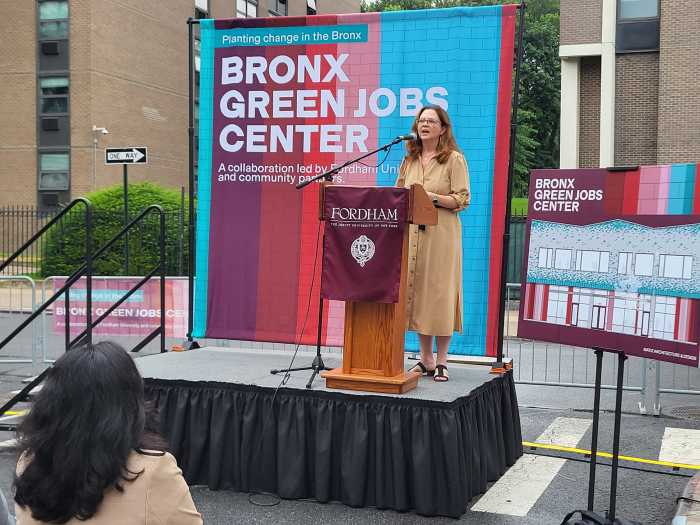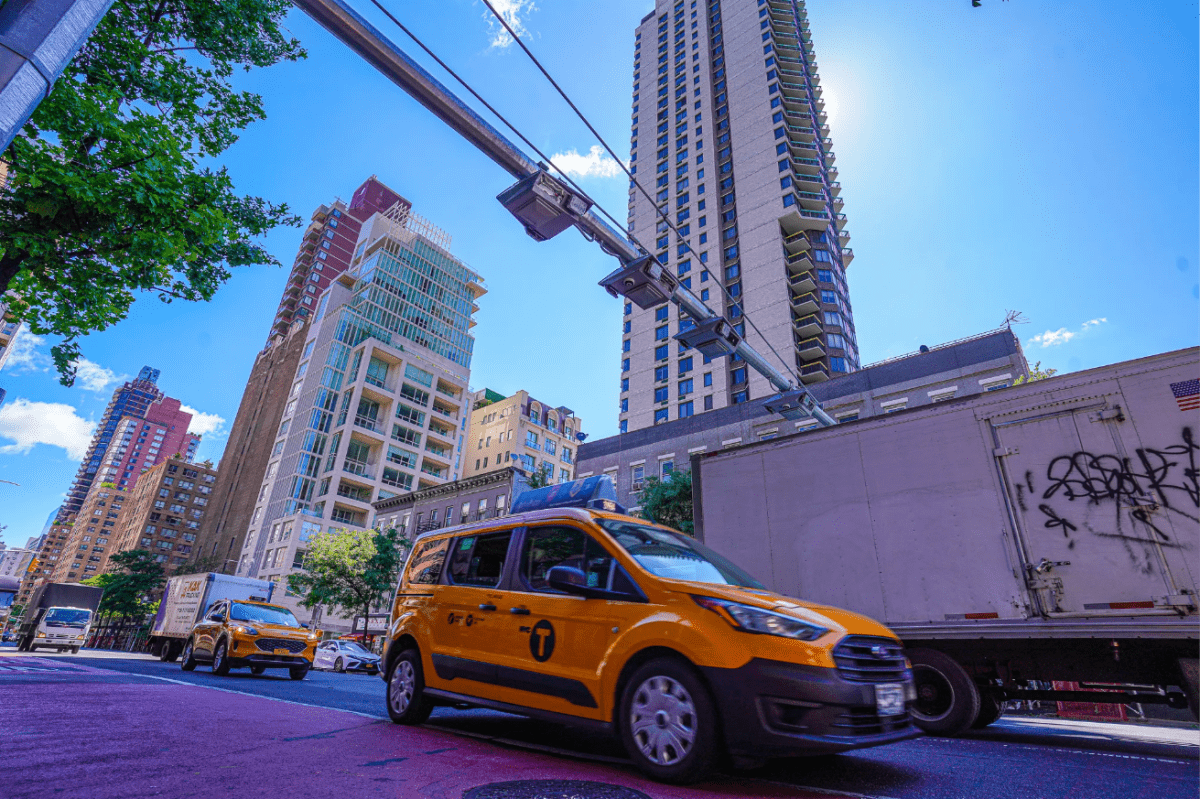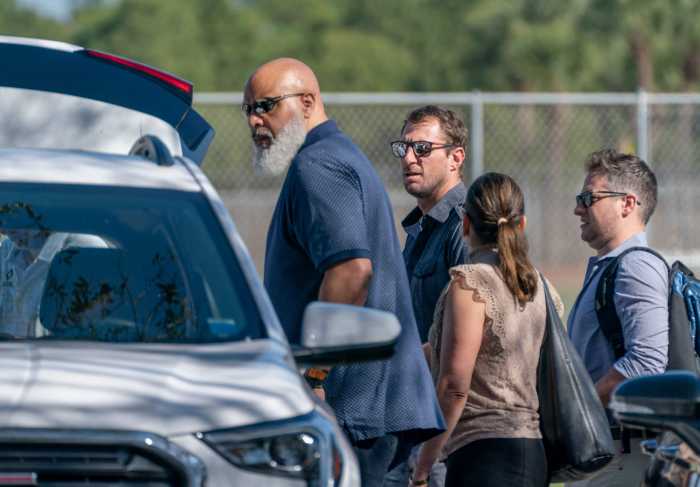In the 1970s, Roy Ayres soulfully crooned that “everybody loves the sunshine.” And that tenet remains true for the rooftop of the 115-year-old grocery business Krasdale Foods in Hunts Point, after it announced the completion of the Bronx’s largest community solar project Tuesday.
A key distribution site within the South Bronx corridor, family-owned Krasdale Foods installed 6,690 solar panels at their facility, which translates to roughly 3.4 million kilowatt-hours and the equivalency of 300 single-family homes’ energy usage.
The longtime distributor said that installation efforts — which began in September 2021 — will not only power the 400 Food Center Drive site, but reduce electric bills for roughly 300 Bronx residents and alleviate environmental harms that have plagued the borough’s Asthma Alley for decades.
South Bronx residents will be able to take advantage of Krasdale’s solar infrastructure and receive credits on their electric bill, according to Lucie Dupas, chief delivery officer of Powerflex, the company that designed and built the solar panels.
“On Sept. 30, 2021, many of us here today gathered to witness the groundbreaking of Krasdale’s solar installation project. It’s hard to believe that almost two years have passed since that day. We are thrilled and excited to be back for the completion of this incredible undertaking — the largest solar installation project in the borough of The Bronx,” said Gus Lebiak, Krasdale Foods president. “This project cements our commitment to remain in the Bronx for years to come. This is our home. We are Krasdale.”
Each solar panel is 7 feet tall and 3 feet wide, and the New York State Energy Research and Development Authority (NYSERDA) helped provide funds for the project through its New York Sun program.
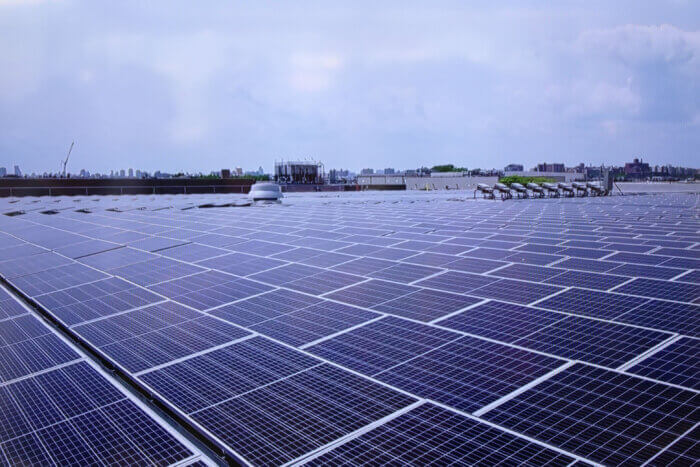
According to NYSERDA officials, the program increased the state’s solar deployment by more than 3,000%, leveraged $7.3 billion of private investment, and created 13,400 solar jobs, since its launch in 2011.
Solar panels harness energy from the sun. In NYC, utility companies are required to compensate solar panel users for solar energy generated, which in turn reduces one’s electricity bill.
In addition to poor environmental health, Bronxites also grapples with high utility costs. On average, New York residents spend about $212 per month on electricity, which adds up to $2,544 per year, according to data from NYSERDA.
“We know many residents sometimes are facing the brunt of being rent-burdened. More than 30% of their income is going towards rent, so if you can reduce their electricity bill, you are a friend to The Bronx,” said Bronx Borough President Vanessa Gibson. “So many of our residents have been denied access to clean air and energy efficiency — but now with this new project — we have a real opportunity to invest in our future generations.”
Another benefit of the installation, according to advocates of the solar project, is the effect that solar energy has on the local air quality, which was severely impacted by Canadian wildfires last week and has been a major issue for decades in the South Bronx.
Solar energy technologies and power plants do not produce air pollution or greenhouse gases when operating.
South Bronx residents often describe the maritime industrial area in the Bronx, which stretches from Port Morris to Hunts Point, as a “toxic soup” of environmental hazards, including peaker plants, waste transfer stations and incessant traffic of diesel trucks that has led to severe environmental and health challenges.

The South Bronx, while being one of the most racially diverse areas in New York City and home to the poorest congressional district in the U.S., has one of the highest death and disease rates from asthma in the country. In the Mott Haven and Melrose sections, which are surrounded by peaker plants, the asthma emergency room visit rate among children ages 5-17 is nearly triple the citywide rate.
“[Hunts Point] is the poster child of disadvantaged communities; highest respiratory illness in the city and the lowest coverage of health insurance, and you talk about all the pollution that they have endured, it’s very inequitable,” said David Sandbank, vice president of distributed energy resources technology at NYSERDA. “So that when I see projects like this, that are located in The Bronx and the Hunts Points region, it’s very special.”
— ET Rodriguez contributed to this report

